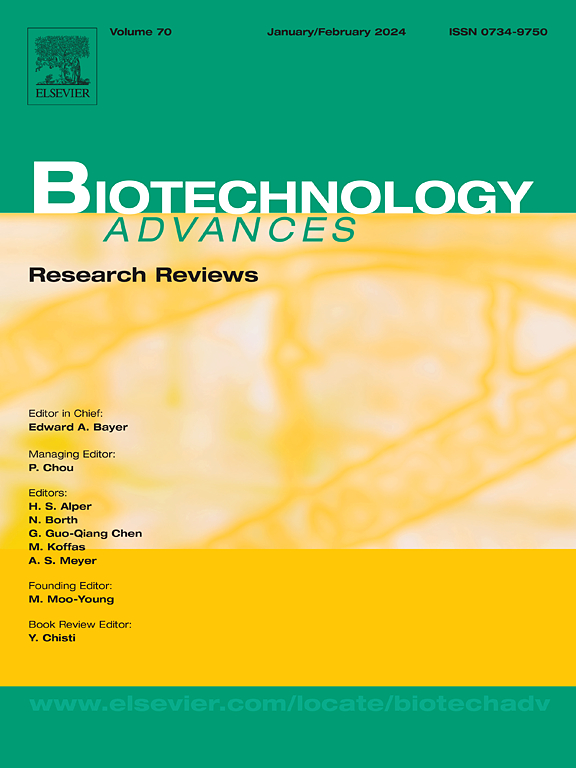Fungal bioconversion of lignin-derived aromatics: Pathways, enzymes, and biotechnological potential
IF 12.5
1区 工程技术
Q1 BIOTECHNOLOGY & APPLIED MICROBIOLOGY
引用次数: 0
Abstract
Lignin, the most abundant aromatic biopolymer on Earth, holds immense potential as a renewable feedstock for the production of high-value bioproducts. However, its structural complexity and recalcitrance pose significant challenges for efficient valorization. Fungal biodegradation offers a sustainable strategy for lignin conversion by employing extracellular oxidative enzymes and specialized metabolic pathways to transform lignin-derived aromatic compounds into central metabolites or valuable end products. Despite extensive research on fungal ligninolytic systems, a systematic integration of aromatic catabolic pathways remains fragmented. This review consolidates recent advances in fungal metabolism of key lignin-derived aromatics, including cinnamic acid, gallic acid, ferulic acid and vanillin, with a focus on their assimilation into central metabolic networks and the enzymatic machinery involved. We highlight the critical role of fungal transporter systems in mediating aromatic compound uptake and efflux. Furthermore, we discuss future research directions, emphasizing the integration of synthetic biology, computational modeling, and systems biology to engineer robust fungal chassis for lignin valorization. Addressing these knowledge gaps will advance the development of fungal-based platforms for sustainable production of renewable aromatics, thereby contributing to the circular bioeconomy and green biomanufacturing.
木质素衍生芳香化合物的真菌生物转化:途径、酶和生物技术潜力
木质素是地球上最丰富的芳香族生物聚合物,作为生产高价值生物产品的可再生原料具有巨大的潜力。然而,其结构的复杂性和顽固性对有效增值构成了重大挑战。真菌的生物降解为木质素转化提供了一种可持续的策略,通过细胞外氧化酶和特殊的代谢途径将木质素衍生的芳香族化合物转化为中心代谢物或有价值的最终产物。尽管对真菌木质素分解系统进行了广泛的研究,但芳香分解代谢途径的系统整合仍然是碎片化的。本文综述了近年来真菌对木质素衍生的芳香烃代谢的研究进展,包括肉桂酸、没食子酸、阿魏酸和香兰素,重点介绍了它们在中央代谢网络中的同化作用和所涉及的酶机制。我们强调了真菌转运系统在介导芳香化合物摄取和外排中的关键作用。此外,我们讨论了未来的研究方向,强调合成生物学,计算建模和系统生物学的整合,以设计强大的木质素增值真菌底盘。解决这些知识缺口将促进真菌为基础的可再生芳烃可持续生产平台的发展,从而为循环生物经济和绿色生物制造做出贡献。
本文章由计算机程序翻译,如有差异,请以英文原文为准。
求助全文
约1分钟内获得全文
求助全文
来源期刊

Biotechnology advances
工程技术-生物工程与应用微生物
CiteScore
25.50
自引率
2.50%
发文量
167
审稿时长
37 days
期刊介绍:
Biotechnology Advances is a comprehensive review journal that covers all aspects of the multidisciplinary field of biotechnology. The journal focuses on biotechnology principles and their applications in various industries, agriculture, medicine, environmental concerns, and regulatory issues. It publishes authoritative articles that highlight current developments and future trends in the field of biotechnology. The journal invites submissions of manuscripts that are relevant and appropriate. It targets a wide audience, including scientists, engineers, students, instructors, researchers, practitioners, managers, governments, and other stakeholders in the field. Additionally, special issues are published based on selected presentations from recent relevant conferences in collaboration with the organizations hosting those conferences.
 求助内容:
求助内容: 应助结果提醒方式:
应助结果提醒方式:


